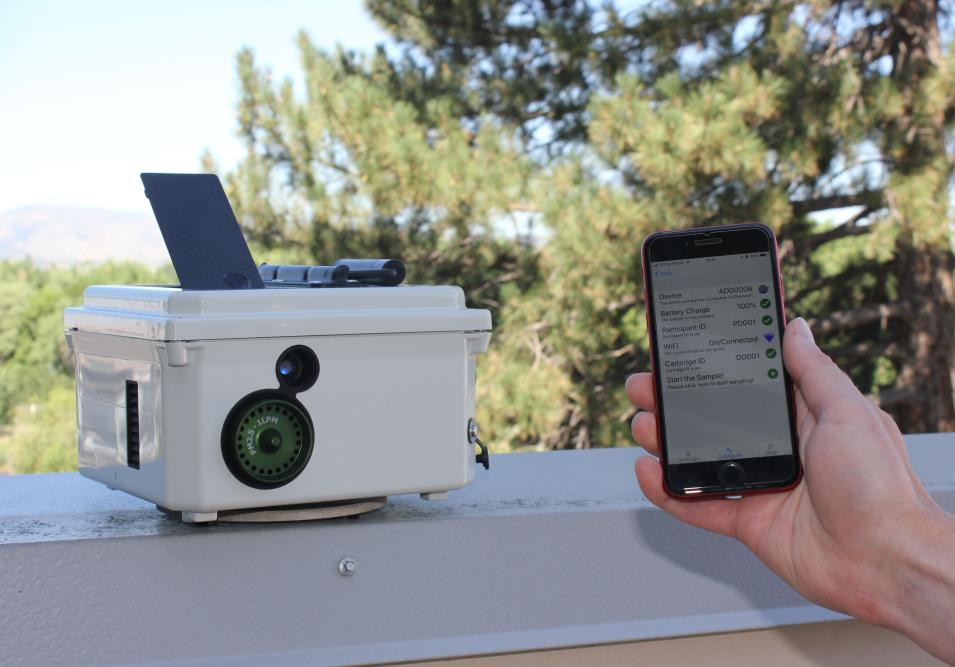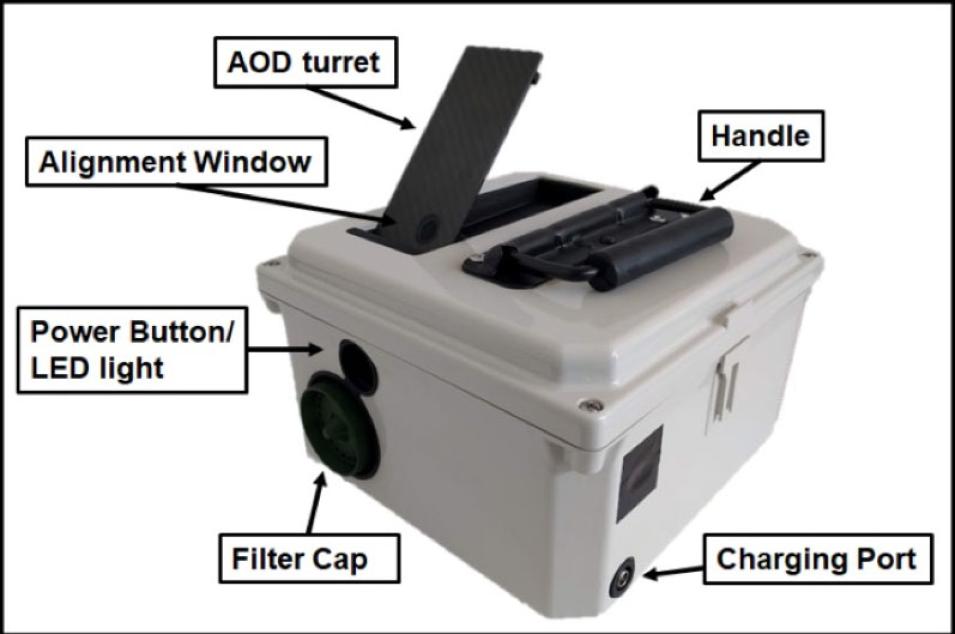John Volckens, Colorado State University
Aerosols are liquid or solid particles that are suspended in air. They include smoke, dust, pollen, bacteria, salt, water, and pollutants. Most come from natural sources such as sea spray, volcanic eruptions, wildfires, and desert dust. Some come from human activity, including transportation, industry, and agriculture. These particles affect air quality and human health. The World Health Organization (WHO) estimates that each year, more than seven million people die from long-term exposure to polluted air.
Citizen-Enabled Aerosol Measurements for Satellites (CEAMS) is led by faculty, researchers, and students at Colorado State University in Fort Collins. The goal of CEAMS is to improve our understanding of how aerosols affect local air quality. Citizen scientists take backyard air quality measurements using an instrument called the Aerosol Mass and Optical Depth (AMOD) sampler. The AMOD measures sunlight intensity at four different wavelengths (440, 5020, 675, and 870 nm) and fine particle pollutant concentrations, allowing scientists to estimate air quality, visibility, and other properties of fine particle air pollution.
CEAMS uses these measurements to understand regional air quality and how it changes in time and space. The data collected by CEAMS will help scientists better understand how NASA satellites observe local air quality and increase our understanding of air quality and its impact on health around the world.

